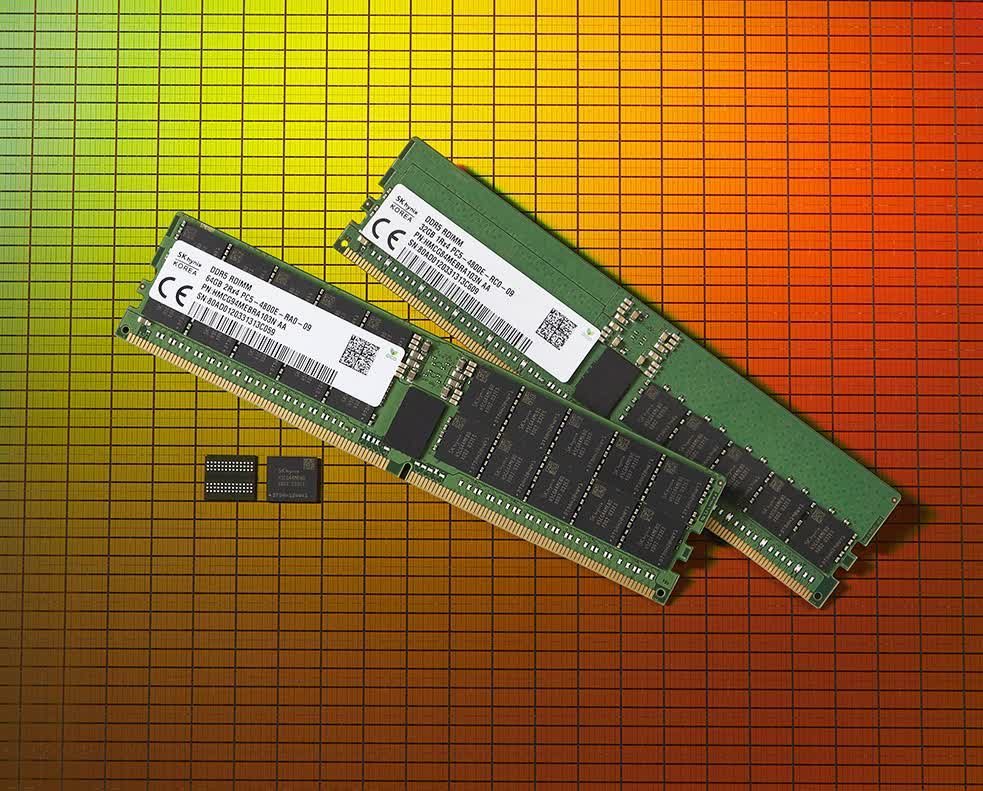What just happened? We've been hearing about the technology for a number of years now, but SK Hynix has finally announced the launch of the first DDR5 DRAM modules. These initial products won't be targeting gamers, though; instead, they're designed for big data, artificial intelligence, machine learning, and other enterprise applications.
The Korean semiconductor giant announced back on November 28, 2018, the development of the world's first 16 Gigabit (Gb) DDR5 DRAM. The company says its DDR5 supports speeds between 4,800 MHz and 5,600 MHz, making it around 1.8 times faster than most standard, non-overclocked DDR4 kits.
SK Hynix says that despite the increased speeds, DDR5 will run 0.1V lower than DDR4, dropping from 1.2V to 1.1V. Additionally, the company has integrated Error Correcting Code (ECC) inside the memory chip, allowing it to correct 1-bit level errors by itself and increase the reliability of applications "by 20 times."
While there was no mention of the first DDR5 modules' capacity, SK Hynix said they could eventually reach 256 GB by using chip-stacking through-silicon-via (TSV) technology.
| DDR5 | DDR4 | |
| Frequency* | 3200 → 8400 | 1600 → 3200 |
| Density | 8 Gb → 64 Gb | 2 Gb → 16 Gb |
| Operating Voltage | 1.1 V | 1.2 V |
| Peak-to-Peak Voltage | 1.8 V | 2.5 V |
| Burst Length | 16 | 8 |
| Bank Groups | 8 | 4 |
| Banks (Total) | 32 | 16 |
| Prefetch Length | 16n | 8n |
"Intel partnered closely with memory leaders including SK Hynix on the DDR5 spec development starting with early architecture concepts through JEDEC standardization," said Carolyn Duran, Vice President of Intel's Data Platforms Group and GM of Memory and IO Technologies. "In addition, we worked collaboratively with SK Hynix on silicon development by designing and testing prototypes to ensure DDR5 meets its performance goals and are fully ready for our mutual customers."
We heard back in April that SK Hynix was getting ready to make DDR5-8400 memory for consumers. Its 8400 MT/s would give it a per-channel theoretical bandwidth of 67.2 GB/s, outpacing DDR4's rated maximum of 25.6 GB/s
A leaked AMD roadmap from earlier this year showed that DDR5 support would arrive in 2022 alongside AMD's latest CPUs and APUs, with the former likely to be based on Zen 4, while the latter is listed as Zen3+ parts. More recently, an update to the Linux source code has confirmed that the next-generation of AMD Ryzen APUs, codenamed Van Gogh, will support DDR5/LPDDR5 memory.
